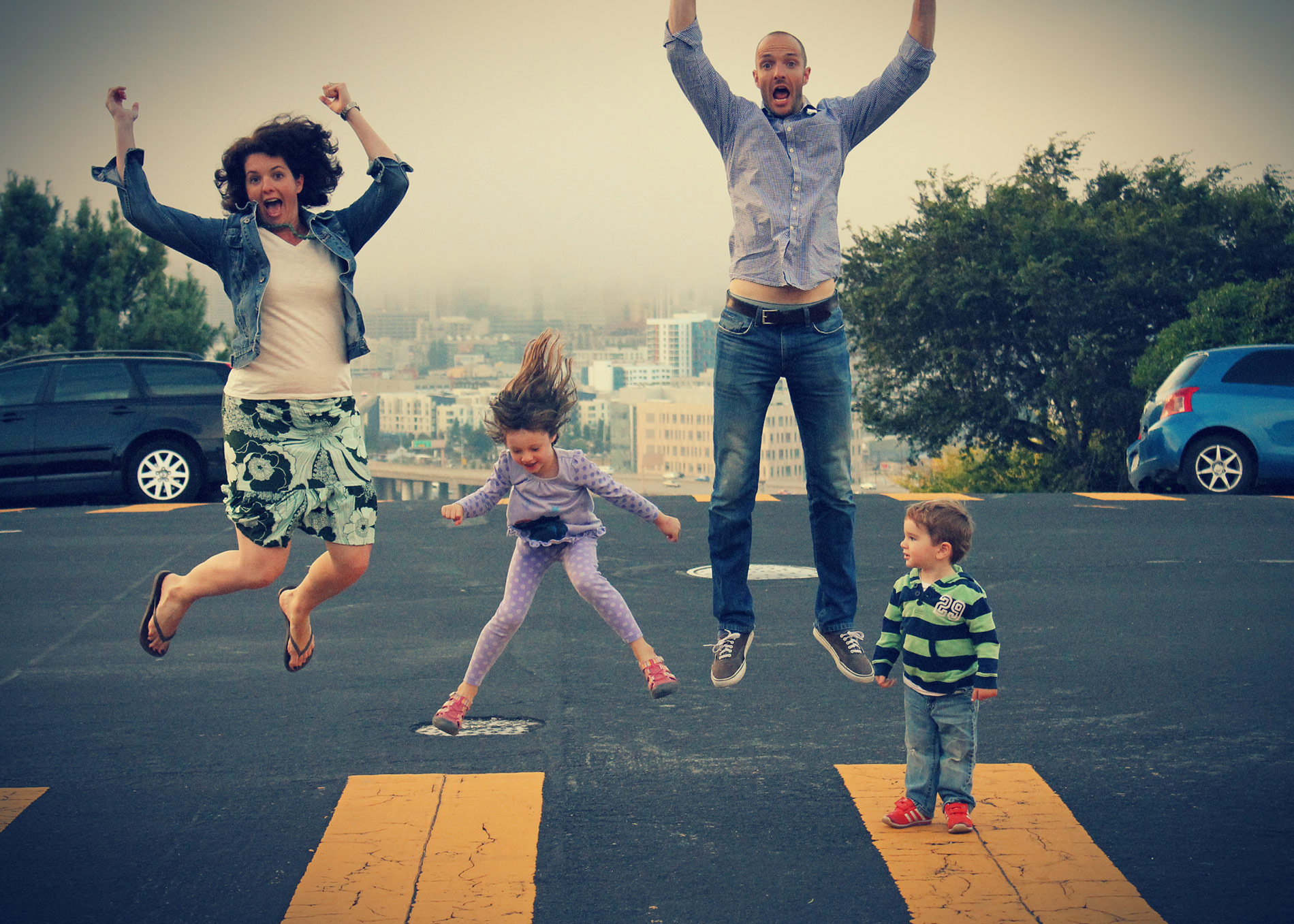
- Interview by Ryan & Tina Essmaker August 13, 2013
- Photo by Dresden Holden
Josh Brewer
- designer
Josh Brewer is a designer and co-creator of 52 Weeks Of UX and Ffffallback. He most recently served as Principal Designer at Twitter. Prior to that, Josh was Director of User Experience at Socialcast, which was acquired by VMware in 2011. Josh is a mentor at Designer Fund and an advisor to a number of startups in San Francisco, where he lives with his wife, Dana, and their two kids, Ruth and Dillon.
Interview
Describe your path to what you’re doing now.
Man! The path to getting here has been kind of crazy. I think it goes back to high school when I wanted to be an art teacher. In my senior year, I managed to have two hours of independent study in art and another hour of theater—it was basically three hours of being super creative every day. Then, when I graduated, I moved out and had to get a couple jobs to pay rent and eat. When I went to college and learned that the art classes were at random times, like 1–5pm on Tuesdays, I decided not to be an art teacher, because classes were during the times I had to work.
I did go to college, though, and after I graduated, I ended up working at a private elementary school in San Diego, where I taught kids how to use computers. The school had an awesome technology program and was one of Apple’s early Lighthouse Schools. All the students had their own iBooks—it was crazy. At the same time that I was teaching the kids to use computers, I was also teaching the other teachers—people who were transitioning to being Mac users. Although I didn’t realize it then, that was the moment when my passion for building things that work started; I can now point back to that and see it clearly. On a related note, I love creating and making things and have always straddled the line between visual communication and building. Making things that connect other people has been a theme throughout all the work I’ve done.
Around 2006, I realized that I was way more interested in building products than building websites. My journey into working with startups came as Web 2.0 was taking off. First, I worked at a small company that went around the US to provide mortgage training. Then I ended up at Slacker Radio, which was amazing. They were actually about to launch a physical device when the iPhone came out—unfortunately, that didn’t pan out, but they’re still doing well. After that, I moved on to work as Creative Director at a company called Suggestion Box. Then I joined Tim Young at Socialcast as it was getting off the ground. Halfway through my journey with those guys, Tim decided to move the company to San Francisco. My wife and I also made the decision to move up to San Francisco with our year-and-a-half old daughter, and that really turned out to be a pivotal moment. The team at Socialcast worked like crazy to build an incredible product that would truly help change the way people work. Then I got an invitation to join Twitter, and I couldn’t pass it up—it was too good of an opportunity. During all of that, I also started 52 Weeks of UX with Josh Porter and worked on a few other little things. That’s the trajectory, I guess.
Tina: Going back to what you said earlier—when you were in college, did you earn a teaching degree? And then when you were teaching computers, did you teach yourself how to design for the web?
I did not get a teaching credential; I got a degree in history with an art minor, if you can believe that. During the first two years I was in school, I had two amazing history professors and ended up taking every single class they taught. Then I took a year off and moved to San Diego. When I went back to Iowa to see my family for the summer, I met my wife and decided to stay and finish school there. I looked into what I had to do to finish my degree and it was going to take years to major in anything other than History. My wife was in school, but was going to be done in a year, and we wanted to move to San Diego. I got a history degree because it was the quickest route to graduation. (laughing)
The awesome part is that, during my last two semesters at the University of Iowa, a good friend of mine worked in the school’s media department. He loved video and was dabbling in the web. It was around 1997 when he shared the web with me and that was the first time I ever messed around with it. Even though the web was around, it didn’t catch for me until I started to teach the kids.
To answer the second half of your question, yes, all the HTML, JavaScript, CSS, and graphic design was mostly self-taught. I learned it from a combination of reading, studying, and practicing. I made really ugly things and then tried to figure out why they looked so horrible. Actually, 52 Weeks of UX was born out of the fact that I was learning all this information and there was no one place to find it—it wasn’t available in a concise, easily digestible way so that people could immediately apply it to work. If there had been a resource like that, I would have been devouring it, and Josh, who authored the site with me, felt the same way.
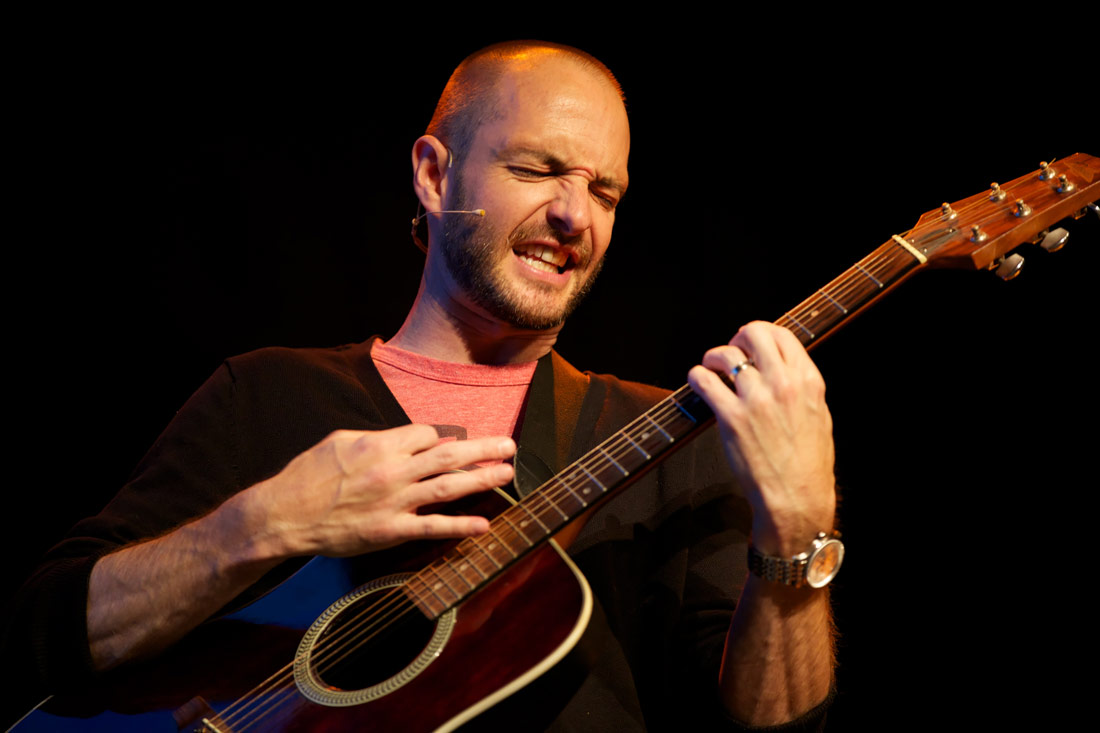
“…when there’s that thing inside, gnawing at you, and you need to go manifest it—because you’re going to lose your mind if you don’t—then it doesn’t matter if it’s risky.”
Tina: You’ve already mentioned Iowa and San Diego, but where are you originally from?
I grew up in Seattle until I was 20; then I moved to San Diego while I took a year off of college. In the meantime, my parents moved to Iowa and I went there to see them for the summer, which is when I met my wife. Then I moved back to San Diego with my wife and now we live in San Francisco. I’m a West Coaster—20 years in Seattle, 14 years in San Diego, and the last 4 up here in San Francisco. I love the West Coast.
Was creativity a part of your childhood?
Absolutely. I grew up in a really creative, super musical family. My dad is a drummer and painter; my mom loves to write. We were also part of a really cool church and had a great community of people who encouraged us to do all kinds of stuff: drawing, painting, and sports, too. In 7th grade, I started skateboarding and lost interest in everything else, though. (laughing)
Overall, I’d say that music was the major creative expression in our family. At one point in time, we had a room in our house that was part office, part music studio. We had a piano, which my sister played; my dad’s drum set; a guitar for me; a bass and cabinet, which my dad bought for my brother; and my mom sang. We were like The Partridge Family. It was super cheesy, but super awesome.
Do you have any videos of that, so we can embed one into the interview?
(all laughing)
No, we don’t. We didn’t have a video camera until a lot later.
You’ve had a winding path. You were a teacher; then you got into the web; then you ventured into the startup world. Have you had an “aha” moment along the way when you knew what you wanted to focus on?
Yes. There were two key moments. The first was in the early 2000s when I bought and read Jeffrey Zeldman’s Designing with Web Standards. I had been building in Flash, but after reading that book, I switched over to web standards. Suddenly, everything I was trying to do made sense.
The second moment was about four years later. I think there’s a difference between liking something and realizing you’re actually good at it. I realized that I love doing this, and I’m actually pretty good at it—and people pay money for it. My wife and I were talking about it one night and she said, “What are you talking about? You know what you love doing and you’re totally capable of doing it.” I thought, “Wait a minute—you’re right!”
Have you had any mentors along the way?
Yes. In life, my dad has been an amazing mentor to me. Obviously, when I was a teenager, I didn’t see it at all, but once I got into my 20s, I distinctly remember my relationship with him changing—or at least I was more aware of it. He is my dad and he’s an awesome guy as well. The pastor who I grew up with was also a huge part of my life.
Aside from them, I don’t know if I’ve had design mentors, but I have had people who I’ve looked up to throughout my career. Personally, one of the most amazing things to me is that I can call guys like Jeff Veen, Doug Bowman, and Naz Hamid friends. They’re folks I’ve long respected and looked up to and I’m thankful to have them in my life. I guess there hasn’t been any one person, but I’ve been fortunate to spend time with and, in many cases, work with phenomenal people.
Has there been a point when you’ve taken a big risk to move forward, and is what you’re doing now a risk?
Yeah, there have been multiple times when I’ve taken big risks. When my wife and I got married, she was 23 and I was 25. We had just graduated college—
Josh’s wife, Dana (heard in the background): That is your big risk?
Josh to Dana: No, not at all! I’m not finished with the story yet.
(all laughing)
When my wife and I got married, we had no money and the lease on my apartment was running out. We had no idea what we were going to do. We wanted to be in San Diego, so we just went for it. We lived with my folks for two months while we saved money and then the teaching job opened up in San Diego and we moved out there immediately. The marrying her part wasn’t a risk—us going out to San Diego was the risk.
Another really big risk was when we moved up here to San Francisco four years ago. We owned a home in San Diego; we were part of an awesome community; and some of our best friends lived within a block or two of us. Tim asked me to move up to San Francisco and make a go of it with Socialcast. It was so hard; it took me weeks to get to the place of saying yes. Then I realized, “Wait a minute. I don’t know if I’m going to have an opportunity like this again. Hell yeah! Let’s do it.”
I have to say that my wife, Dana, is amazing. We’ve done a number of things in our lives that have caused our friends to ask, “What are you guys doing?” Early on, we took these leaps of faith. It’s like the invisible bridge scene in Indiana Jones and the Last Crusade. There doesn’t appear to be a bridge, but then the character scatters dust out in front of him and realizes there is a bridge there. I feel like Dana and I have had a few of those moments in our lives for sure.
In addition to the move to San Francisco, leaving Socialcast and most recently, Twitter, were other risks. The biggest risks in leaving Twitter were giving up a secure position, a great team, an established product, and the association that comes with the brand. Hunter Walk wrote an article about what it meant not to have his Google email address anymore after leaving Google; I experienced a similar thing in leaving Twitter. There’s no doubt that I got to attend certain events or meet certain people because of my position at Twitter. All those things were great, but at the end of the day, the most important thing is following your passion—I know that sounds kind of cliché at this point. But when there’s that thing inside, gnawing at you, and you need to go manifest it—because you’re going to lose your mind if you don’t—then it doesn’t matter if it’s risky.
Are your family and friends supportive of what you do?
Oh, man. Before I left Twitter, my wife and I talked a lot about what I wanted to do, where my heart was, and things that mattered to me. I really began to assess a lot of things and, to be honest, I think that came out of an experience I had this past February. I got very sick and ended up in the ER due to bad medication. I was in the ER, laying on the table, thinking, “Okay, this can’t be it. I have a family at home and we have a lot more life together. What am I doing?” The longer I thought about it, the more I began to question everything. Every single day is a gift and it’s so easy to coast—we can blink and a month is gone. During that experience, something hit me: I had to be more in control of what I was doing with my life, and that started the conversation with Dana.
I also started talking with my folks as well as a few friends who I am deeply grateful for. Everyone said, “Yes, you need to do this thing. I haven’t seen you this excited in ages.” Once that started happening, I didn’t know how to stop the train. I started thinking about that more than anything else and I knew I needed to make a change. I was thankful to have the support of friends and family during all of that.
Tina: I think you can still do what you need to do without the support, but it is easier to make those tough decisions when you have the backing of friends and family.
Yup. For Dana and I, it came down to one conversation. Dana had just ran her first 5K in Santa Cruz and she did awesome. We were driving back from that and started talking about a five-year plan. I think we were both in agreement of where we wanted to be. I said, “Okay, so you know that we’ve got some big goals and in order to make them happen, it’s going to be some work for the next few years.” She knew exactly what I meant by that and she said, “Yes, let’s do it!” That meant everything to me.
“…one of the unbelievable things about working at Twitter was that you become connected to everything that happens because your fingerprint is on it. Something you designed has allowed people to be heard. That’s powerful and I want to do more of that.”
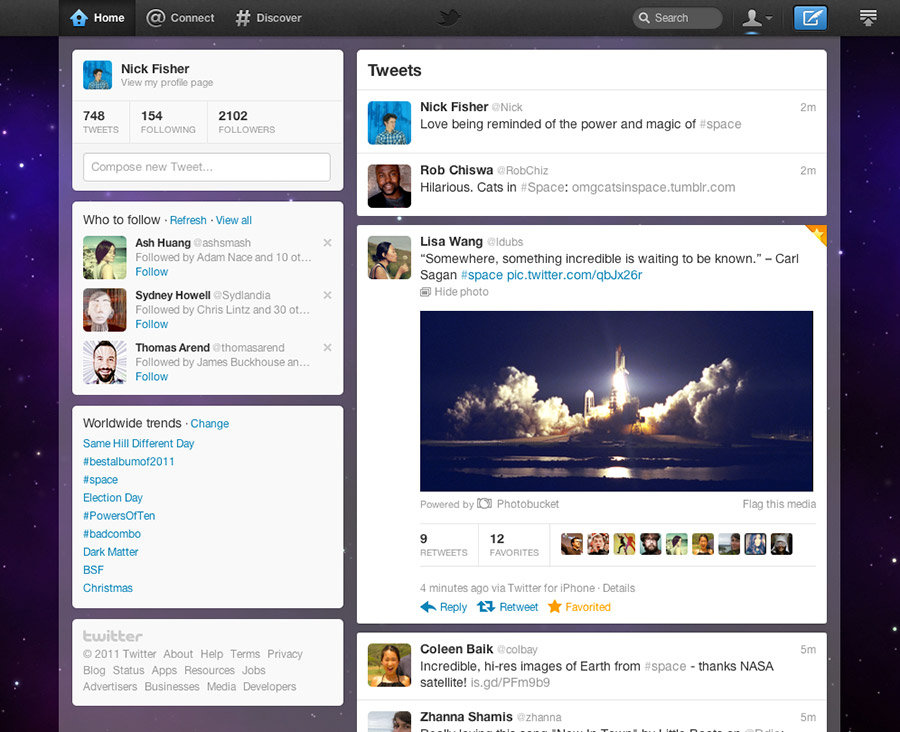
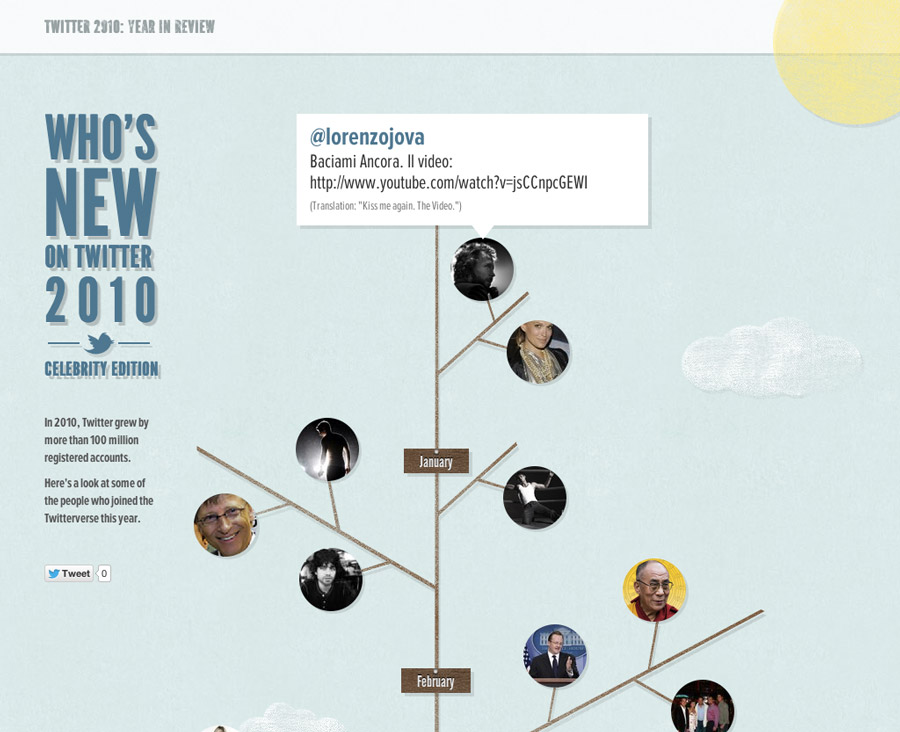
Do you feel a responsibility to contribute to something bigger than yourself?
Yeah. On many, many levels. Not only does having kids humble you in ways that nothing else in life can, but it also gives you a sense of awareness and urgency. There’s now more than just you, or even you and your wife. In addition to that, I grew up in a family that believes we have the ability to change people’s lives by the way we treat them and care for them. That is a part of me, and practicing it has contributed to my sense that there is something beyond me.
Personally, giving to charities is also important. I have so much respect for what the folks at charity: water, water.org, and Invisible Children are doing. Each year, my wife and I make a point to put money aside to invest in charities, locally and globally, so that we can have an impact that’s bigger than us. Giving our money, or time, in any way that goes beyond ourselves is one of the most valuable things I think we can do as humans.
Professionally, our industry—the web and design community—is amazing. I don’t get the sense that people in other industries have the conversations we do; they don’t have virtual relationships with people for years, meet in person, and realize they’re already good friends. The support and encouragement are amazing, but I do think that there’s something more we can aim for. You guys were at Brooklyn Beta last year, right?
Yeah.
I’ve been there every year and I always walk away with a sense of urgency about doing things that have a tangible impact on people’s quality of life. Can we work on things that are improving people’s lives? That comes in many different forms and I would love to be a part of something that does that. If my kids can look back one day and say that their dad contributed to something that broke down stereotypes or helped marriage equality or helped a country be liberated, that would be amazing. Honestly, one of the unbelievable things about working at Twitter was that you become connected to everything that happens because your fingerprint is on it. Something you designed has allowed people to be heard. That’s powerful and I want to do more of that.
We asked you this at Brooklyn Beta, but you’ve had some time to think about it, so we’ll ask again: Are you satisfied creatively?
The funny thing is that when you asked me that last October, I was not creatively satisfied at all with the work I was doing. I felt bad about it and tried to dodge the question so I wouldn’t be too blunt. Even so, I don’t think anyone is ever creatively satisfied. I think it was Frank Chimero who compared creative satisfaction to hunger. If you eat a great meal, you are so satisfied. There’s nothing like the pairing of a good red wine with a steak, but a couple hours later, you’re hungry again. Creativity is like that and when that’s your job, I think it gets even harder. A lot of times you’re not being creative at work; you’re just doing the work. Writing HTML for a new page isn’t the most creative thing in the world, but doing the work is part of any process of creation. The moments that are satisfying are when something clicks or two disparate ideas get fused together and you drop everything and run with it. There’s more satisfaction in those moments than in the rest of the process combined.
The second part of that question is about what you’d like to do or explore in the next 5 to 10 years. Is that something you can speak to right now as your new projects is still under wraps?
I can speak to that generally. One thing I want to explore deeply is what it means for design to lead, especially in regard to how it shapes organization and cultures of companies. We’re starting to see more and more companies with designers as cofounders or CEOs. The whole designer-as-founder thing isn’t a power play; it’s about a specific approach to the way a product is built and sold. I think there’s an argument that could be made that just about everything we do in building these companies is a design problem. Leading, solving problems, and setting goals from a design-centered perspective seems to be more holistic. I’m interested in starting and helping others make that transition—designers and engineers who are makers, but wouldn’t normally have the conviction to take that step. I want to enable them to make it happen and to create a culture that says that one of the greatest things you can do is take a leap of faith. If we can build the right structures around that as a community, I think we’re going to see people working on more important problems. That’s a huge focus for me, without a doubt.
Other than that, there’s a part of me that would love to spend a lot more time learning to code. In a dream world, I’d go Matrix-style and become an iOS programmer overnight—that’d be awesome. I’m a big proponent and have always said that design and engineering are two sides of the same coin. The best designers I’ve worked with are engineering-minded; the best engineers I’ve ever worked with have a sensitivity and sensibility around design and a human-centered approach.
What advice would you give to a young designer starting out?
Be humble. Humility is your best friend. It doesn’t matter how talented you are; over time, people aren’t going to want to be around you if you’re not humble. The first thing to acknowledge, which is hard when you’re young, is that you don’t know everything. A lot of what we do is acting as if we know everything and that’s part of how you move forward, but how you do that and the spirit behind it is critical. I can definitely say that more doors will open for you if you come in with a humility and a deference for those who have gone before you and the people you will be working with. That reflects your outlook and attitude toward humanity. I can’t think of any attribute that is more important when talking about what we do.
That’s good. So, how does where you live impact your creativity?
We live in the city, but can jump in the car and go 20–30 minutes and be in nature that is absolutely stunning. That’s pretty amazing when you need to escape, get out, and breathe. I think the energy and pace of the city is amazing, but I do think that it wears on you over time. A lot of times, you’re riding the wave and using that energy to work harder and move faster, but then you reach the point where it’s time to get off the wave. You need to sit and let a couple sets go by so you can recharge. I think the beauty of this city is that it affords both of those things. It’s also diverse and energetic with really progressive views on everything. That is contrasted with this beautiful nature and ability to disengage easily. I love San Francisco and I can’t imagine living anywhere else.
Is it important to you to be part of a creative community of people?
It’s totally important and there’s an amazing community here in the city. One of the interesting things about Twitter is that it created a community for our industry, regardless of location. A lot of the first people who I followed lived in the UK and New York and random places around the world. Taking away geography as a requirement for that community is something that I’m deeply grateful to Twitter for. That said, there’s a lot that comes from physically being around people who share similar interests, passions, and challenges. The guys out here at Designer Fund have been doing a great series of talks and getting the design community together a lot. I give them a ton of props for facilitating that stuff. There are a lot of other companies and groups who are also doing stuff; in San Francisco, there’s something to go to every night of the week. You can burn out on it pretty quickly, but having the access to those folks and being able to have those conversations is important.
What does a typical day look like?
(laughing) Oh, man. So, my wife and I came up with this ingenious agreement when our second kid was born: we take turns getting up with the kids. Up until recently, Dillon got up anywhere between 4–6am, which is horrible—and I am the grumpiest person you’ve ever met before 6am. But in order to save our sanity, we take turns, so I get to sleep in every other day. What’s different now that I’m not at Twitter is that I’m at home longer in the mornings doing work, and then I’m out and about doing meetings later in the day. Before this, a typical day was getting up by 7am at the latest, heading out the door by 8:30–9am to ride to work, and putting in a full day before heading home to try to eat dinner with my family and put the kids to bed. Then I’d work a little more or watch a movie with my wife. It was a pretty routine routine, if you will.
Do you have a current album on repeat?
Aww, man. Daft Punk’s Random Access Memories is just incredible. If it was vinyl, I’d have to get another one right now—it’s getting so much airtime. What else? My wife liked the Macklemore album, which surprised me, even though it shouldn’t. So that’s been getting played.
Do you have any favorite movies or TV shows?
I love Star Wars—but only episodes VI, V, and VI. I also like The Lord of the Rings Trilogy and The Hobbit—I’m just a sucker for that stuff. Oh, and I like Anchorman.
(all laughing)
Ryan: Are you excited for the new one?
I’m not sure; I have mixed emotions. Anchorman holds a very special place in my heart, but my wife is thankful that I don’t watch it as much anymore. I used to be able to quote the entire movie—it was bad. Old School is pretty legit, too.
Do you have a favorite book?
My current favorite is Ready Player One by Ernest Cline. It’s a super fun read and I couldn’t put it down. The other book I keep coming back to is Seeing is Forgetting the Name of the Thing One Sees, which is the biography of Robert Irwin, an LA-based artist from the 50s, 60s, and 70s. It was really deep and bent my brain a little, but it was good.
Your favorite food?
Beer.
(all laughing)
Ryan: What’s your favorite beer?
Hop Stoopid by Lagunitas.
Ryan: Good choice.
Food-wise, I like good Thai food, sushi, and pizza.
Alright, one last question. What kind of legacy do you hope to leave?
My kids are a huge piece of it—who they become, how they love and care for the people around them, and the things they choose to put their time and energy into. Seeing my beliefs and hopes be reflected and carried on in my kids is of the utmost importance to me. It’s the greatest legacy I can possibly leave.
It’s probably super cheesy and I’m probably going to die reading this later, but I love people—I really do. It’s the coolest thing in the world to meet new people and get to know them. It is extremely important to me to do whatever I can to help others by being as honest and open as I can, and by helping to open doors for them. If, down the road, people remember me because of that, then everything else is secondary.
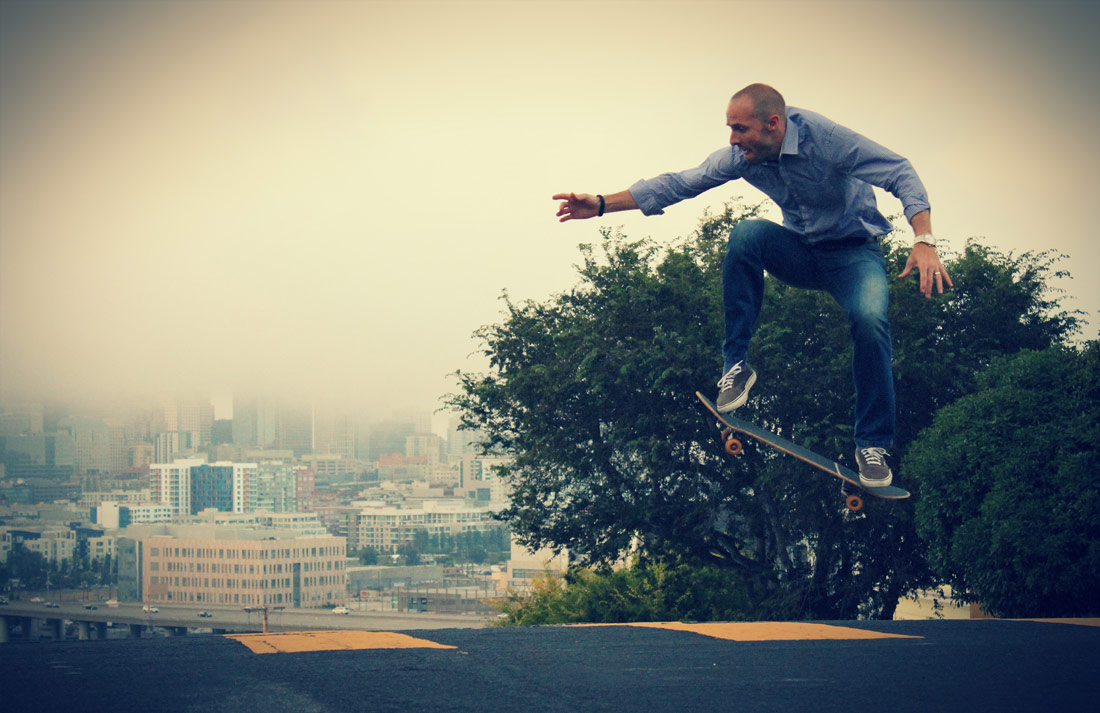
“It’s probably super cheesy and I’m probably going to die reading this later, but I love people—I really do…It is extremely important to me to do whatever I can to help others…”